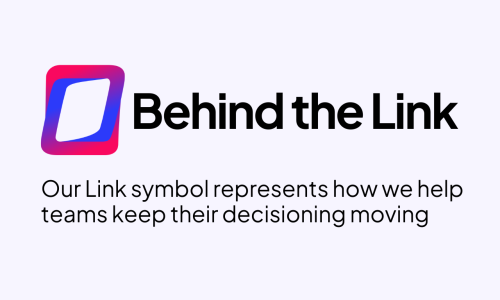AI is the “New Normal” That is Here to Stay
Artificial Intelligence, otherwise known as AI, has now become a ‘must-have’ for the banking industry. It is now something that banks simply cannot avoid if they want to stay at the forefront of the disruption and evolution of the financial sector. In fact, if you search for “artificial intelligence banking” (without quotes) on Google, you will be presented with a whopping 121 million results.
With this in mind, we wanted to pause today, enjoy these last rays of summer and take a moment to understand what exactly Artificial Intelligence is. There is a myriad of different definitions out there on various websites, and it is an interesting exercise to contrast the different takes on the concept.
A good starting point for a general idea of Artificial Intelligence is the famous Encyclopedia Britannica, which defines AI as “the ability of a digital computer or computer-controlled robot to perform tasks commonly associated with intelligent beings”. According to this definition, the term is frequently applied to the project of “developing systems endowed with the intellectual processes characteristic of humans, such as the ability to reason, discover meaning, generalize, or learn from past experience”.
The encyclopaedia also addressed the evolution of digital technology since the 1940s and the recognised gap between performing “very complex” tasks and matching “human flexibility” over broader domains or in tasks requiring a lot of daily knowledge. However, the definition goes on to point out that some programmes exist that have “attained the performance levels of human experts and professionals in performing certain specific tasks”, such as for medical diagnosis, IT, search engines and voice or handwriting recognition.
Another very interesting explanation of AI is found on the website of one of the most important technology companies of the latter half of the 20th Century: IBM. In their definition of Artificial Intelligence, they refer to three key moments that have helped shape the concept. Firstly, they reference a 2004 document written by John McCarthy, who defines AI as “the science and engineering of making intelligent machines, especially intelligent computer programs. It is related to the similar task of using computers to understand human intelligence, but AI does not have to confine itself to methods that are biologically observable.”
Just as IBM has roots linking back as far as 1880, the “history” of AI also goes back many decades, all the way back to one of the pioneers of modern computing, Alan Turing. In his paper ‘Computing Machinery and Intelligence’ (1950), Turing asked himself if machines could think, and he presented the now-famous Turing Test, in which a human interrogator had to try to distinguish between a computer response and a piece of human text. According to IBM, we should also mention the 1995 book, ‘Artificial Intelligence: A Modern Approach’ by Stuart Russell and Peter Norvig. In this book, the authors go into detail about four possible aims and definitions of AI, which differentiate IT systems according to the extent of their reasoning, thinking and action.
One of the highest-ranking definitions online is that offered by the purely online and remote job website Builtin. What is interesting about this explanation is not so much the definition itself but the way it is later developed. According to the Builtin website, AI “is a wide-ranging branch of computer science concerned with building smart machines capable of performing tasks that typically require human intelligence”. So far, nothing particularly new. However, the site goes to establish “four types” of Artificial Intelligence, which they name: a) Reactive Machines; b) Limited Memory; c) Theory of Mind; and d) Self-Awareness. They also mention various examples of Artificial Intelligence such as Siri, Alexa and other smart assistants, self-driving vehicles, robo-advisors, conversational bots, E-mail spam filters and Netflix recommendations.
In a post like this, it would be hard to ignore the internet’s most popular open encyclopaedia, Wikipedia. According to their entry, AI “is intelligence demonstrated by machines, as opposed to the natural intelligence displayed by humans or animals”. According to Wikipedia, the main AI textbooks define it as the study of “intelligent agents”, which is to say, “system that perceives its environment and takes actions that maximize its chance of achieving its goals”. It also goes on to say that some popular accounts use the term to describe machines that imitate cognitive functions associated with the human mind, such as learning to problem-solving.
This Wikipedia entry states that “Artificial intelligence was founded as an academic discipline in 1956”, but also makes an interesting observation about the evolution of the field of study: “…in the years since has experienced several waves of optimism, followed by disappointment and the loss of funding (known as an “AI winter”), followed by new approaches, success and renewed funding. AI research has tried and discarded many different approaches during its lifetime, including simulating the brain, modelling human problem solving, formal logic, large databases of knowledge and imitating animal behaviour. In the first decades of the 21st century, highly mathematical statistical machine learning has dominated the field, and this technique has proved highly successful, helping to solve many challenging problems throughout industry and academia.”
To round off this brief review of AI, we want to take a look at two of the main consultancy firms in modern times. According to Deloitte, “AI refers to a broad field of science encompassing not only computer science but also psychology, philosophy, linguistics and other areas”. The aim of AI is “getting computers to do tasks that would normally require human intelligence”. That said, they recognise that “there are many points of view on AI and many definitions exist”. For their part, Accenture offers the view that “Artificial intelligence is a constellation of many different technologies working together to enable machines to sense, comprehend, act, and learn with human-like levels of intelligence”. They also add that “Maybe that’s why it seems as though everyone’s definition of artificial intelligence is different: AI isn’t just one thing”. They go on to add another significant contribution to the definition of AI, identifying the difference between “Narrow” (or “Weak”) AI and “General” (or “Strong”) AI.
As you can see, this is not just a single discipline gaining popularity with the financial sector. This is a complex range of living consciousness with hundreds of potential definitions, owing much to brilliant pioneers like Alan Turing and many other studious research and analysts. Artificial Intelligence is the “new normal” that is here to stay.
Recent articles

When Fraud Stops Looking Like Fraud
Read article
Behind the Link
Read article





